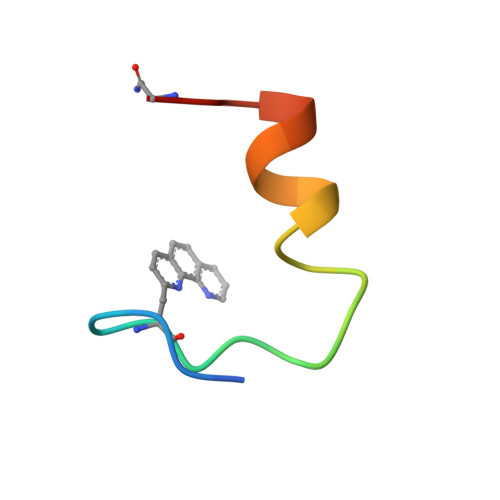Design of a monomeric 23-residue polypeptide with defined tertiary structure.
Struthers, M.D., Cheng, R.P., Imperiali, B.(1996) Science 271: 342-345
- PubMed: 8553067
- DOI: https://doi.org/10.1126/science.271.5247.342
- Primary Citation of Related Structures:
1HCW - PubMed Abstract:
Small proteins or protein domains generally require disulfide bridges or metal sites for their stabilization. Here it is shown that the beta beta alpha architecture of zinc fingers can be reproduced in a 23-residue polypeptide in the absence of metal ions. The sequence was obtained through an iterative design process. A key feature of the final design is the incorporation of a type II' beta turn to aid in beta-hairpin formation. Nuclear magnetic resonance analysis reveals that the alpha helix and beta hairpin are held together by a defined hydrophobic core. The availability of this structural template has implications for the development of functional polypeptides.
- Division of Chemistry and Chemical Engineering, California Institute of Technology, Pasadena 91125, USA.
Organizational Affiliation:

















